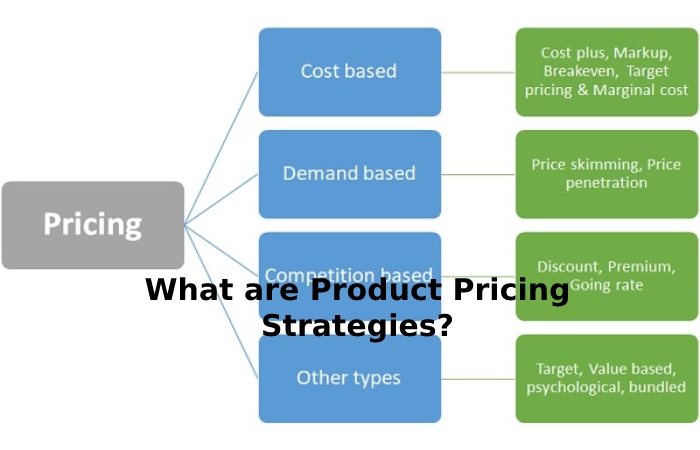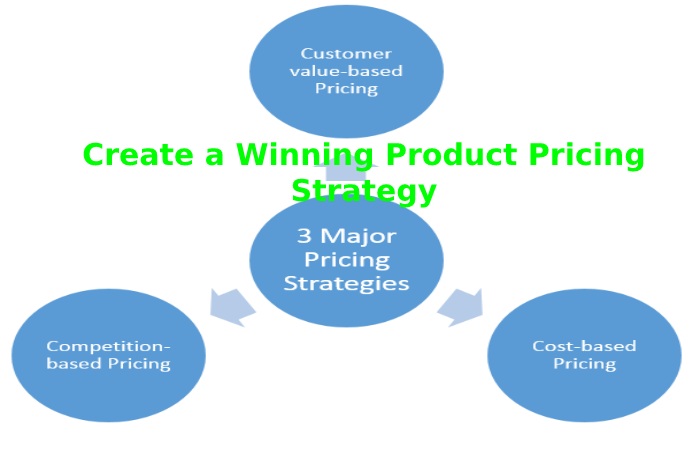Table of Contents
Introduction
The strategy turns Product pricing into a deliberate process in which the company strategy dictates the set of product features and the worth customers associate with them. For example, pricing strategies may include cost-plus and value-based pricing.
Sometimes setting a price seems so hard that you want to put a dart board filled with different prices on the wall and see what number you hit. Okay, maybe that’s being cavalier about a topic that makes the difference between a profitable product and one that doesn’t quite hit the market. But, the truth is that product pricing isn’t about pricing your product but the strategy involved. Therefore, you will be more successful using product pricing strategies as a starting point.
The strategy turns pricing into a deliberate process in which the company strategy dictates the set of product features, the value customers associate with them, and the brand. In this scenario, pricing is a natural outcome of the discussion, not a starting point. For example, does your company create luxury products with a high-end brand? If so, product pricing strategy almost dictates that you set your price very high to convey that your brand is exclusive and that not everyone can afford it.
Some products pricing strategies:
- Competition-Based Pricing
- Cost-Plus Pricing
- Dynamic Pricing
- Freemium Pricing
- High-Low Pricing
- Hourly Pricing
- Premium Pricing
- Project-Based Pricing
- Value-Based Pricing
- Bundle Pricing
What are Product Pricing Strategies?

Pricing strategies refer to businesses’ processes and methodologies to set values for their products and services. If valuing is how much you charge for your goods, then product pricing strategy is how you regulate what that amount should be. There are diverse pricing strategies to choose from, but some of the more mutual ones contain:
- Worth-based pricing
- Competitive Pricing
- Price scanning
- Cost valuing
- Penetration valuing
- Economy valuing
- Dynamic valuing
Pricing is an Underutilized Growing Pedal
Many corporations focus on acquisition to raise their business, but studies have shown that small differences in pricing can raise or inferior revenue by 30-60%. Despite that, even among Fortune 400 companies, fewer than 8% have functions dedicated to setting the best price possible. As a result, there’s a missed opportunity in the business world to see rapid growth for relatively little effort.
Because most businesses spend less than 12 hours per year thinking about pricing, there’s a lot of untapped growth potential in enhancing what you charge. Choosing the best pricing process is a more powerful growth lever than customer achievement. It can sometimes be up to 7.5 times more powerful than acquisition. Since you have interested, you may also read this article: Dark Hallway Ideas that Make Your Home looks Great
A weak product pricing strategy:
It does not precisely represent the value of your product.
If you think you have a winning product, and you should if you’re selling it, then you need to influence customers of that. Setting prices too low sends the opposite message.
It makes customers feel insecure about ordering
Just as the right price is one that customers will quickly pull the trigger on, too high or too low a price will cause hesitation.
Targeting the wrong customers
Some customers prefer value, and others prefer luxury. Therefore, you need to price your product to match the type of customer you are targeting.
Create a Winning Product Pricing Strategy

Initially, the actual number you are charging is not that important.
There are a few exceptions, but for the most part, you need to figure out what range you’re in first: a $10 product, a $100 product, a $1k product, etc. Don’t waste your time debating $500 vs. $505 because this doesn’t matter as much until you have a stronger foundation under you.
Instead, understanding the following is much more important:
- Find your value metric
- Establish your ideal patron profiles and segments
- Complete research and user experimentation
Determine your value metric:
For example: per seat, per 1000 visits, per CPA, per GB used, per transaction, etc. You’ll be fine if you get everything else wrong in price, but your value metric is correct. It’s that important. A pricing strategy based on a value metric (versus a monthly tiered fee) is important because it ensures you’re not charging a large customer the same as a small customer.

